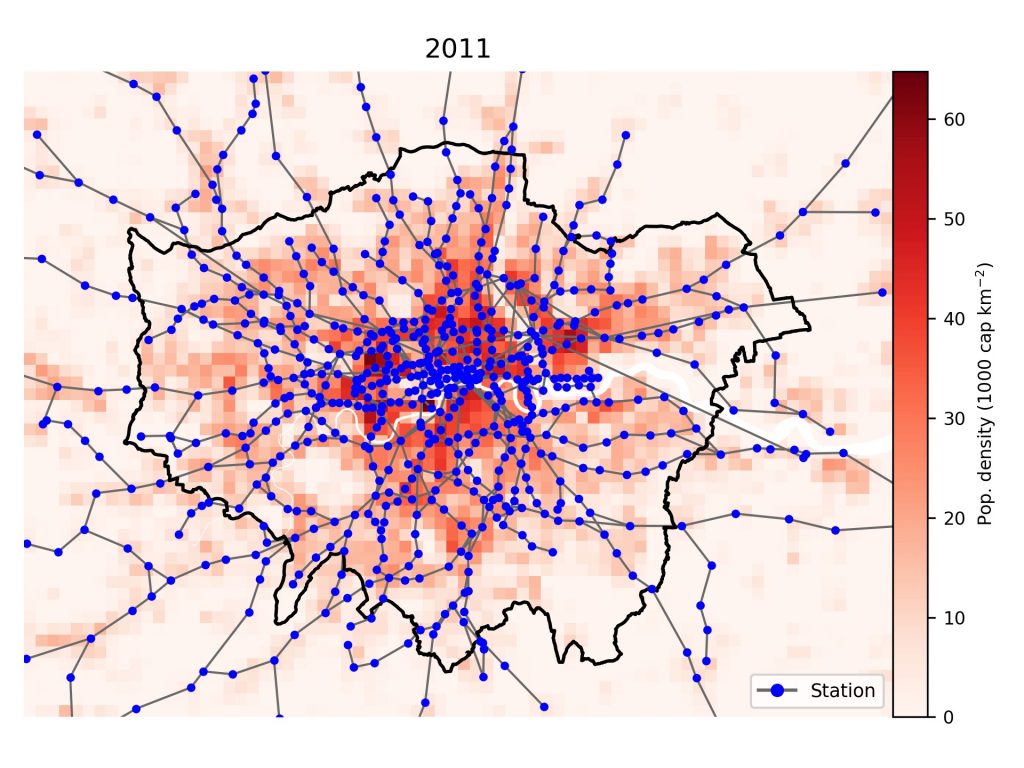Cities are complex multi-scale systems composed of multiple sub-components (e.g. for population, energy, transport, climate) that interact with each other on various spatio-temporal scales.
Urban planning applications and policies aimed at shaping healthier and more sustainable urban environments should account for such complex interactions as they regulate the growth and functioning of cities, often resulting in emergent large-scale phenomena. Yet our ability to quantitatively describe city behaviour is still limited due to the variety of processes, scales, and feedbacks involved.
At URBES we seek to analyze and conceptualize complex urban dynamics in the most general terms to predict and optimize future urbanization trajectories.
Urban growth
The space-time evolution of population and urban transport networks display striking similarities with the behaviour of biological organisms – watch our animation for the city of London and read our paper here.
